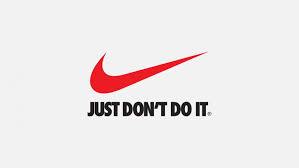Lockdown Placard
- eveline-kinzkofer
- May 7, 2020
- 3 min read
Updated: May 13, 2020
The workshop:
This workshop / project will afford you the opportunity to vent in a personal and creative way, about how you are feeling and coping with the Coronavirus lockdown. We would like you to create a piece of work in the form of an illustrative placard. This placard can state how you feel about your personal art manifesto, in respect of the current situation. We would like you to use stencilling techniques to interpret your slogans and images. You may use as many layers as you deem fit to make your placard. Minimum size A3, maximum size A2.
Before brainstorming thoughts of a strong and perhaps influential slogan, I had a look at how some brands have been able to spread the message about coronavirus and social distancing. Evidently, I am drawn to illustrative placards and posters. However I can also appreciate that when trying to make a point or inform people of a certain matter, that simplicity can often be more effective.
Stages:
Brainstorm and rough out your ideas in sketchbook form. Starting with a slogan and then a supporting image.
Try to find / source and adapt materials and tools that you have to hand where you are currently situated
Outline and cut out your stencils
Overlay your stencils in order and begin applying colours. Allow sufficient time to dry in-between layers
Make sure you photo document all stages of making for your blog post
Coronavirus has, quite understandably, affected the entire world in many negative ways. I am certain that the lockdown approached people quite suddenly and its safe to say no one was expecting the outcome we’ve had from it. Although it takes time to adapt to new ways of living and learning I’ve tried to keep a positive attitude towards being quarantined, in an attempt to make the best out of a bad situation. I’ve tried representing this in my placard by showing ways in which people have managed to keep themselves busy with, or finding productive ways to spend their time.
Initially I was really looking forward to this workshop. I had a rough couple of ideas for the placard and hadn't worked with stencils in a while. I sketched out my illustration again in larger form so I'd have a rough idea of how large each stencil should be. I have a lot of paper at home so I didn't mind using some of it to create a stencil.
Usually my illustrations tend to focus on a lot of detail and I have a fairly sketchy style. When making the stencils I had to consider not making the design as intricate, as it would be impossible for me to cut it out. It helped thinking of the placard as a screen print, as I was imagining creating a number of layers in terms of colour block. I'd imagine each different colour as a new screen and completely simplified the image.
I got together materials I had available at home to create the stencils and the placard. I didn't have any acrylics at home, I only had 4 different coloured inks. I used these, as well as a sponge to dab the ink onto the placard. i was completely let down by my outcome. Unfortunately my stencils didn't work out too well, either because the ink was too runny, or the paper was too thick and so when I applied the ink it bled out along the edges of the design. And because I only had a limited amount of colours, I didn't get any shades I was hoping for. It was a fun experiment, but ultimately didn't work as I don't have the right or enough tools at hand in my home.
Because I had a strong image in mind of what I wanted to create from this placard I wasn't satisfied with the outcome from the physical stencil. This made me consider trying to create stencils digitally instead. Using the lasso tool, I was able to select a single section of my illustration. once you make a selection, you can use your tools to paint, erase, and fill the area. This tool acted as my stencil as I was able to focus on one area, while the rest of the image wasn't affected, and the ink wouldn't bleed through. I also had the option of choosing from three different brush tools; pixel brushes, live brushes and vector brushes. I decided to use live brushes, as these imitated the workshop best, as if I were drawing physically. The live brushes are pixel-based oil and watercolour brushes, and you can come back to add or blend colours, even after you're done painting. While I was using the watercolour brush, I even had the opportunity of changing the amount of water on my brush, giving me full control of the water flow.











































Comments